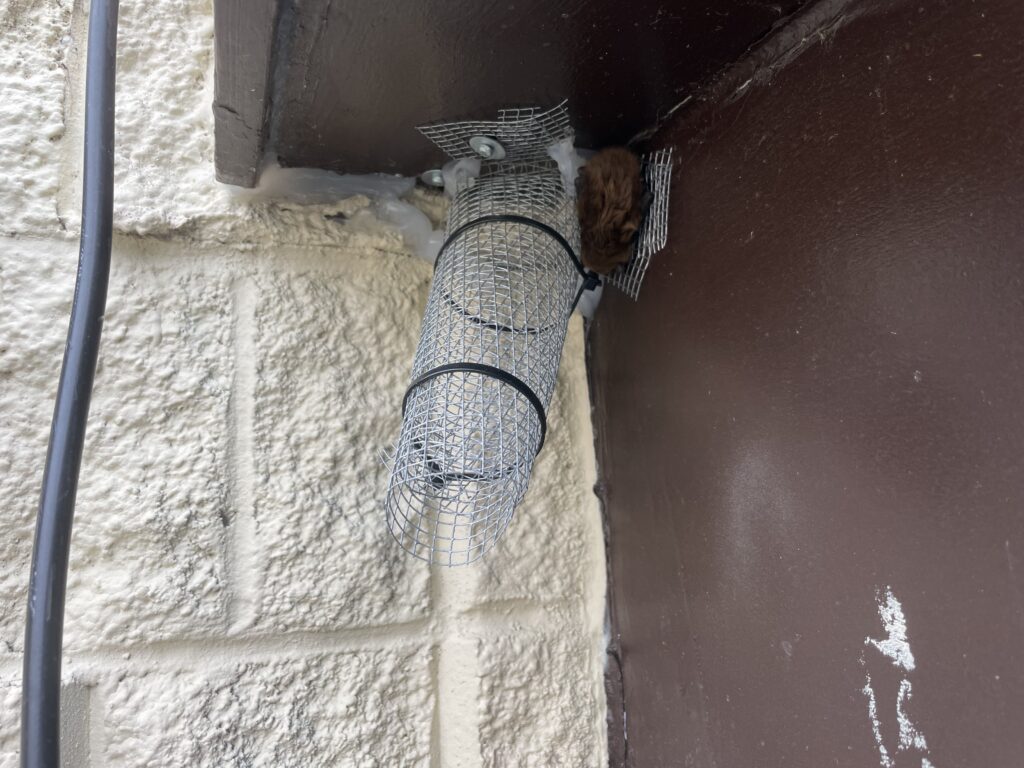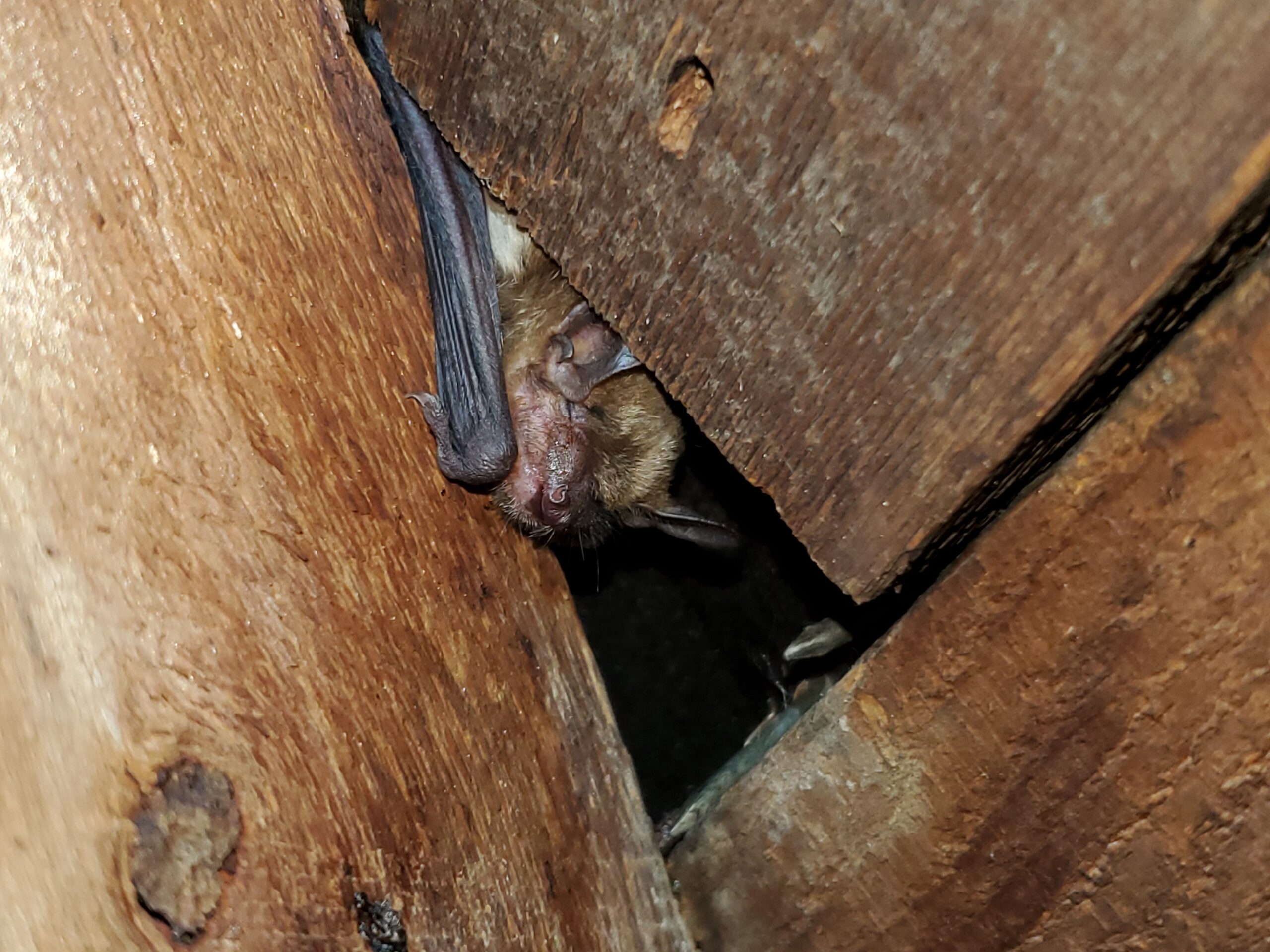Bats are a common sight during summer evening strolls around York but they disappear with the falling leaves in late autumn. Whether you fear bats or appreciate them for eating insects, you may have wondered what happens to them in winter and how bats get in the house in the first place. Here are answers to some frequently asked questions about bats that winter in Ontario.
Where Do Bats Hibernate?
Depending on the species, bats either migrate south or find a place to sleep the cold months away. Hibernation is a natural process in which an animal slows most of its body functions down to a near halt. A bat’s tiny heart, which normally beats between 200 and 300 times per minute, slows down to only 10 beats per minute and the bat may breathe only once every several minutes. These extreme adaptations allow a bat to conserve energy during a season when food is scarce.
Before humans colonized Ontario, two species of bats, the small brown bat and the big brown bat relied on caves and rock crevices to serve as winter homes. Now, when one of these bats encounters an attic, basement, or garage, it has no way of knowing this location is any different from the natural structures its ancestors used. How bats get in the house is not always obvious, but it is clear that they do find their way in through tiny openings.
Do Bats Really Hang Upside Down When Hibernating?
You have probably seen pictures of bats hanging upside down. Even the superhero Batman sleeps this way in several movies. While this unusual behaviour seems like an urban legend, it is actually a fact. If you enter a room where bats are hibernating, you will see bats hanging by their feet with their wings wrapped around themselves like a blanket. Mother bats even nurse their babies in this position!
When Batman sleeps inverted, he no doubt feels the pressure of blood rushing away from his feet and into his head. Bats, however, are so tiny and have such minute blood volume that gravity does not affect them in the same way. Furthermore, special tendons in their legs lock into place once their feet grasp the ceiling. Thus, bats feel completely comfortable and do not have to worry about falling off their perches while sleeping.
Do Bats Still Eat During Winter?
While bat species in other parts of the world eat foods as varied as fruit, flower nectar, and even animal blood, Ontario bats subsist on only insects. This narrow dietary requirement makes them an asset to humans during the summer when insects are plentiful. During the winter, however, a flying insect is a rare sight and this lack of food is why hibernation is a bat’s best option for survival.
Bats normally emerge from hibernation in March or April. However, they may wake up sooner for the following reasons:
- Their location in the hibernaculum becomes too cold and they seek a better spot nearby.
- A fellow bat or other animal disturbs them and they must readjust their position.
- The temperature becomes too warm and they feel hungry.
It is normal for hibernating bats to wake up periodically. If the temperature is warm enough, they may also look for food before returning to their roost.
Is There Bat Removal Near Me?
If you have bats inside your house, take comfort in knowing that Skedaddle provides wildlife control in York. Our technicians will identify the type of bats you have and determine whether they are hibernating inside your house. We will remove them in a humane manner and sanitize contaminated areas so they are safe for your family to enter again. Contact Skedaddle Humane Wildlife Control today for a consultation.





